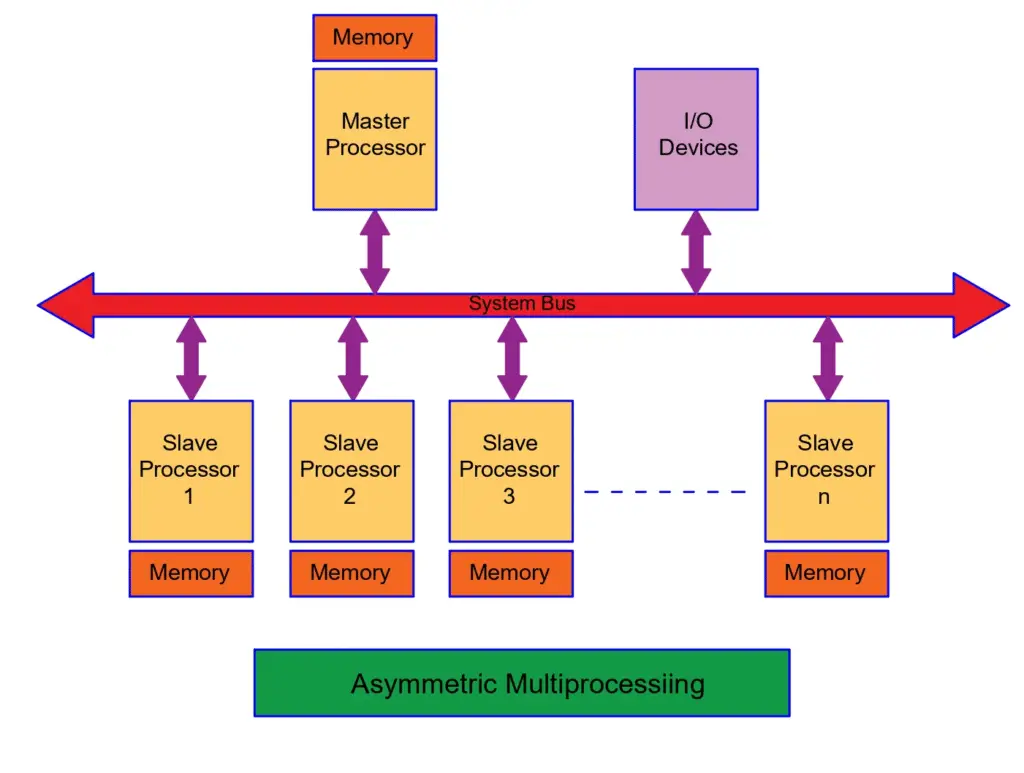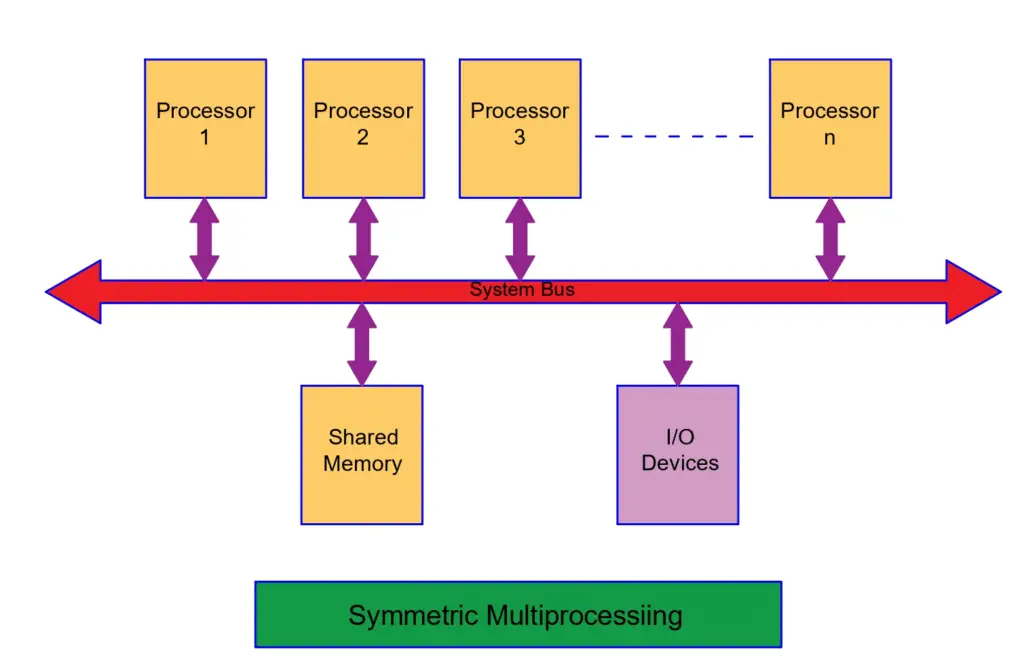This article describes the difference between symmetric and asymmetric multiprocessing. A multiprocessing system is defined as the capability of performing multiple processes simultaneously. Based on the kind of processors used, multiprocessing systems can be of the following two types.
- Asymmetric Multiprocessing
- Symmetric multiprocessing
In this article, we will discuss the differences between Asymmetric and Symmetric multiprocessing based on several factors such as construction, memory usage, tasks performed, communication between the processors, etc.
What is Asymmetric Multiprocessing?
Asymmetric multiprocessors are defined as processors that use multiple processors controlled by a master processor. The processors in an asymmetric processing system operate based on a master-slave relationship.
According to this relationship, the master processor performs the task of the operating system, manages the entire data structure, programs the slave processors, and assigns tasks to the slave processors as well.

Even though the asymmetric multiprocessing system interconnects all the processors, no communication link exists between the master and slave processors. The master processor controls all the slave processors.
Another important fact about asymmetric multiprocessor processors is that they do not have any shared memory and operate independently of one another. For instance, if one of the processors is performing the OS tasks, the other one does the input-output tasks simultaneously. The applications requiring an embedded system to execute certain tasks simultaneously without much power use asymmetric multiprocessors.
What is Symmetric Multiprocessing?
Symmetric multiprocessors are defined as processors that are identical to each other and can perform shared tasks due to the presence of shared memory. This shared memory among the processors results in efficient task completion, as the tasks can be divided among the processors and accomplished at a faster rate.
Unlike asymmetric multiprocessors, symmetric multiprocessors being identical in architecture, do not have a master-slave relationship. All the processors share the task of the operating system equally. They take up and perform tasks from the common queue list one after another, ensuring that each processor performs different tasks.

Symmetric processors exchange certain kinds of communications among each other via shared memory. Symmetric multiprocessors have an added advantage over asymmetric multiprocessors regarding appropriate load balance, fault tolerance, and minimized CPU bottlenecks.
However, the system design is quite complex because all processors are synchronized. When one of the symmetric processors collapses, the computing capacity of the multiprocessing system is reduced.
Difference Between Symmetric and Asymmetric Multiprocessing
The following table highlights the key differences between a symmetric and asymmetric multiprocessor as follows –
| Parameter | Symmetric Multiprocessing | Asymmetric Multiprocessing |
| Processor types | All the processors are identical to each other. | All processors are not identical to each other. |
| Tasks of the operating system | Any symmetric CPU can do the tasks of the operating system. | The operating system tasks are performed only by the master processor. |
| Communication | Due to shared memory, symmetric multiprocessors communicate with each other to execute the assigned tasks. | There is no communication between the master and the slave processors, as the master processor manages all the slave processors. |
| Task assignment | The tasks are assigned to the symmetric processors via a prepared queue list. | The master processor assigns tasks to slave processors. |
| Architecture | The system design of a symmetric multiprocessor is very complex due to the need for CPU synchronization. | The system design of an asymmetric multiprocessor is very simple and straightforward. |
| Expense | Symmetric multiprocessing systems are expensive as they have a complicated architectural design. | The asymmetric multiprocessing systems are comparatively cheaper as they have a simpler architectural design. |
| System complexity | Symmetric multiprocessors have a complicated system design. | The asymmetric multiprocessors have a simple system design. |
| System failure | When any of the symmetric processors fails, the other processor takes up the task of that failed CPU. | When the master processor collapses, the slave processor takes over as the master processor and performs its tasks. But when a slave processor fails, the other processor takes up its tasks. |
Conclusion
In conclusion, both symmetric and asymmetric multiprocessing systems improve system performance due to the presence of multiple CPUs that can perform several tasks simultaneously. However, the most significant difference between them is that asymmetric multiprocessors follow the master-slave relationship, which means that all the processors or CPUs of the asymmetric multiprocessing system are not alike.
On the other hand, symmetric multiprocessors are identical in architecture as they share a common memory. However, owing to their complexity, symmetric multiprocessors are comparatively costlier than asymmetric multiprocessors with a relatively simpler system architecture.